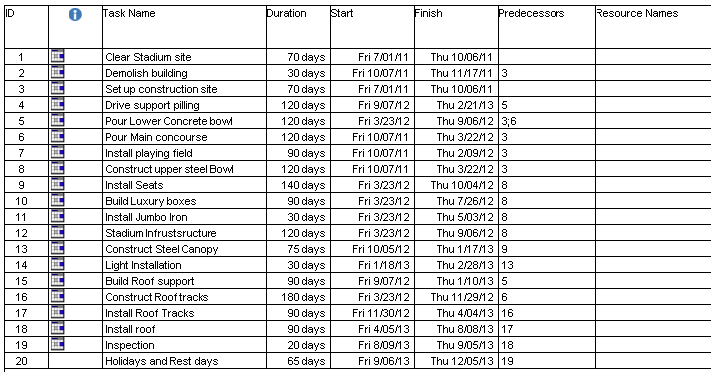

Will the project be able to be completed by the May, 20 deadline? How long will it take?
In designing a project, time and attention must be given to the critical milestones that may render the project unsuccessful. This illustration of the major milestones which have to be achieved for the project to be completed in time is referred to as the project’s critical path. The Gantt chart (Image 1), illustrates these stages well for the Greendale Stadium project (Carey 64). The project is likely to be completed in time given that there are no extraordinary occurrences outside the control of G&E. It will be completed on December 1st 2013.
What is the critical path for the project?
The critical path of the project consists of the following
- Setting up the site for construction
- Pouring of the main concourse
- Installation for the roof tracks
- Inspection
Based on the schedule would you recommend that G&E pursue this contract?
Based on the schedule, I am definitely recommending that G&E to pursue this contract. Not only will it be possible to complete on time, but it will also open up avenues for bigger prospects for the company. Furthermore, the estimated benefit of $2 Million is worth the pursuit. The schedule is clearly indicative of the reason I support this contract for G&E. The Gantt chart simplifies the project schedule and illustrates its critical path. The holidays and rest days have also been taken into consideration. If there should arise any unforeseeable calamities, G&E can still deliver on the project by utilizing a crash program that may make use of the holidays and rest days by compensating their work force amicably (McElvaine 1001).
Works cited
Carey, Raymond. “Constructing powerful control charts.” The Journal of ambulatory care management 25.4 (2002): 64.
McElvaine, Robert. “Main Street Ready-Made: The New Deal Community of Greendale, Wisconsin.” The Journal of American History 75.3 (1988): 1001 – 1002.